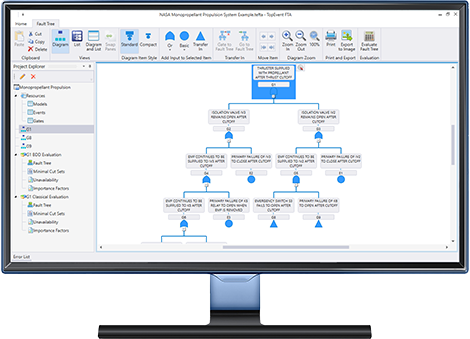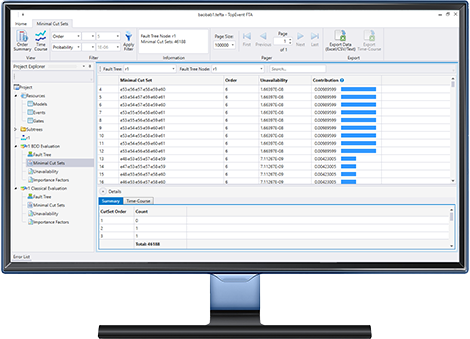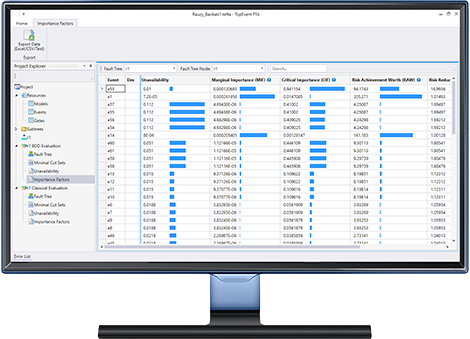TopEvent FTA
Fault Tree Analysis Software
TopEvent FTA is interactive software for Qualitative and Quantitative Fault Tree Analysis.

Qualitative Fault Tree Analysis
Millions of Minimal Cut Sets
With TopEvent FTA, you can quickly evaluate complex Fault Trees with millions of Minimal Cut Sets.

Quantitative Fault Tree Analysis
Exact probability values
TopEvent FTA can calculate the exact values of the Unavailability and Importance Factors (Marginal Importance, Critical Importance, Risk Achievement Worth, Risk Reduction Worth, and Diagnostic Importance).
